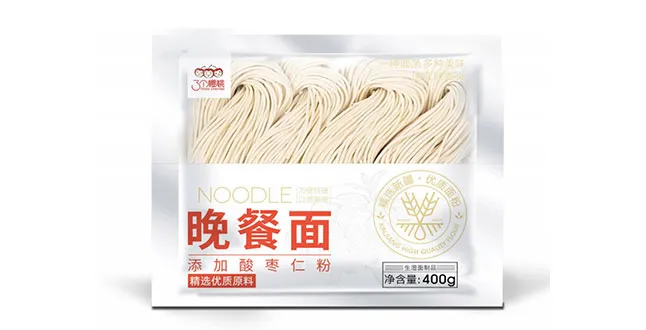Exploring the Unique Benefits of Japanese Konjac Noodles for Healthy Diets
Exploring the Delights of Japanese Konjac Noodles
Japanese konjac noodles, known as shirataki, have become a sensation in the culinary world, particularly among health enthusiasts and those seeking low-calorie alternatives to traditional pasta. These unique noodles, made from the konjac plant (Amorphophallus konjac), offer a delightful cooking experience while providing a range of health benefits that are hard to ignore.
What are Konjac Noodles?
Konjac noodles are translucent, gelatinous strands made from the konjac root, which is rich in glucomannan, a water-soluble dietary fiber. The process of making these noodles is relatively simple; the konjac root is harvested, dried, and then processed into a paste, which is shaped into noodles. After being cooked, the noodles are packed in water to preserve their freshness, making them ready to use straight out of the package.
Nutrition and Health Benefits
One of the most significant advantages of konjac noodles is their nutritional profile. They are extremely low in calories—often containing less than 20 calories per serving—making them an appealing option for those on calorie-restricted diets. Additionally, they are gluten-free, suitable for vegans, and low in carbohydrates, aligning perfectly with various dietary needs, including ketogenic and paleo diets.
The high fiber content of konjac noodles plays a vital role in digestive health. Glucomannan has been shown to promote feelings of fullness, which can aid in weight management by reducing overall calorie intake. Moreover, this soluble fiber can help regulate blood sugar levels, making konjac noodles a smart choice for those with diabetes or insulin sensitivity.
japanese konjac noodles

Cooking and Pairing Options
Konjac noodles are remarkably versatile and can be incorporated into a variety of dishes. Their neutral flavor allows them to absorb the tastes of whatever ingredients they are paired with, making them perfect for stir-fries, soups, salads, and even in sushi rolls.
To prepare konjac noodles, the first step is to rinse them under cold water to remove their natural odor. They can be quickly heated in a pan with your choice of protein and vegetables or added to flavored broths for a hearty soup. One simple yet delicious option is to sauté konjac noodles with garlic, sesame oil, and seasonal vegetables, topped with soy sauce or a splash of rice vinegar for an umami kick.
Cultural Context and Popularity
In Japan, konjac is a traditional food that has been enjoyed for centuries, often served as part of a healthy dish called sukiyaki or enjoyed in dishes like niku-jaga. Recently, as global awareness of healthy eating has grown, so too has the popularity of konjac noodles in international cuisine. They can now be found in health food stores and mainstream grocery chains around the world, often marketed as a miracle food for weight loss.
Conclusion
Whether you are looking to lighten your meals, reduce your calorie intake, or explore new culinary options, Japanese konjac noodles present an exciting solution. Their unique texture, combined with their health benefits and versatility, makes them a fantastic addition to any diet. As food trends continue to evolve, konjac noodles are likely to remain a staple in healthy eating due to their deliciousness and nutritional advantages. Exploring this ancient Japanese food may inspire your next culinary adventure, offering both satisfying meals and a pathway to better health.
-
Unleash Your Inner Chef with Delectable Italian Pasta CreationsNewsAug.01,2025
-
Savor Health and Flavor: Irresistible Soba Noodles for Sale Await!NewsAug.01,2025
-
Nourish Your Body with Premium Organic Ramen - A Culinary Delight AwaitsNewsAug.01,2025
-
Elevate Your Dishes with Our Exquisite Kinds of Egg NoodlesNewsAug.01,2025
-
Dive into Flavorful Convenience with Our Ramen OfferingsNewsAug.01,2025
-
Discover Exquisite Types of Naengmyeon and Chilled Soba NoodlesNewsAug.01,2025
-
Is Whole Wheat Pasta Healthy?NewsMay.30,2025
Browse qua the following product new the we

















































































































